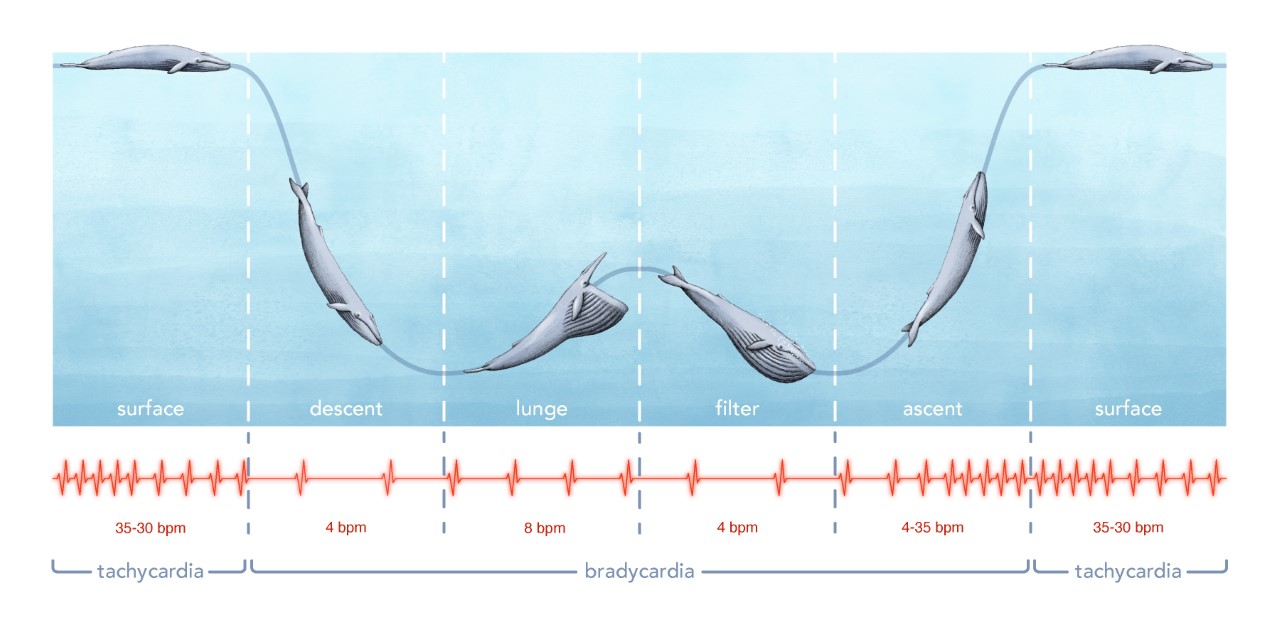Blue whale heart rate recorded for the first time, scientists say
Researchers say their analysis suggests the blue whale’s heart is working at its limit, which may explain why it has never evolved to be bigger.

The heart rate of the blue whale – the largest animal on Earth – has been recorded for the first time, scientists say.
Researchers waited for the whale to surface before reaching out with a long pole to attach a non-invasive electrocardiogram to its skin.
Four suction cups secured the sensor-packed tag near the whale’s left flipper, where it recorded the heart rate through electrodes embedded in the centre of two of the suction feet.
“With a very keen eye, Paul Ponganis – our collaborator from the Scripps Institution of Oceanography – found the first heart beats in the data.
“There were a lot of high fives and victory laps around the lab.”
Scientists say their analysis of the data suggests the blue whale’s heart is working at its limit, which may explain why the creatures have never evolved to be bigger.

The research published in Proceedings of the National Academy of Sciences shed light on the extreme ranges of heart rates in blue whales during diving, feeding, and surfacing.
Blue whales slow their heart rate for deep dives but expend energy to lunge forward and engulf water for filtering and feeding.
Researchers monitored the heart rate of the whale along the surface of Monterey Bay during 8.5 hours of diving.
Foraging dives lasted as long as 16.5 minutes and reached a maximum depth of 184 metres, whereas surface intervals were typically less than four minutes.

During surface intervals, the heart rate reached 37 beats per minute after very deep dives, near the blue whale’s maximum heart rate, as the whale worked to re-oxygenate its tissues.
Scientists say their results show how the circulatory system of whales adapts to accommodate diving and feeding.
Ten years ago Prof Goldbogen and Mr Ponganis measured the heart rates of diving Emperor Penguins and for years wondered if they could do the same for whales.
Prof Goldbogen said: “I honestly thought it was a long shot because we had to get so many things right – finding a blue whale, getting the tag in just the right location on the whale, good contact with the whale’s skin and, of course, making sure the tag is working and recording data.”





